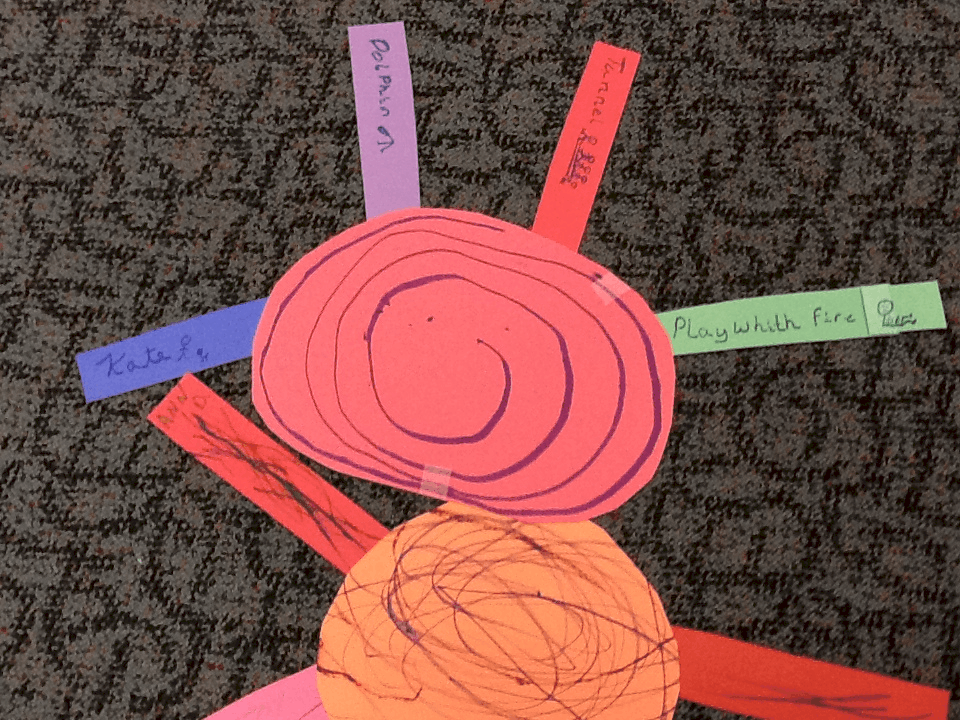Chanting With Kids
Chanting Calm: A Mantra Routine for Kids Yoga Classrooms
Mantra is a simple, reliable way to shift a noisy group into focused attention. The rhythm links breath, the shared sound builds connection, and the repetition creates a predictable ritual kids can trust. Below is a universal routine you can use in any kids yoga class, after-school club, or classroom transition.
Why mantra helps kids settle
- Rhythm organizes breath and pace.
- Unison speaking reduces side conversations.
- A repeated script lowers decision fatigue.
- A set opening or closing ritual signals “we begin” or “we finish.”
Core mantra to teach
Lokah Samastah Sukhino Bhavantu
Kid-friendly meaning: May all beings be happy and free. May our thoughts, words, and actions help that happen.
How to introduce (script)
- “Place one hand on your heart and one on your belly.”
- “Breathe in through the nose. Breathe out with a soft ‘ha.’”
- “Repeat after me,” then speak one line at a time.
- “Now together,” repeat 3 to 6 cycles at a steady pace.
Call-and-response pattern
- Leader: Lo-kah
- Group: Lo-kah
- Leader: Sa-ma-stah
- Group: Sa-ma-stah
- Leader: Su-khi-no Bha-van-tu
- Group: Su-khi-no Bha-van-tu
Timing
- Quick reset: 60 to 90 seconds
- Deeper practice: 3 to 5 minutes
Optional second mantra for theme work
Om Mani Padme Hum
This mantra is often used to cultivate compassion and patience. Many teachers pair each syllable with an intention. One kid-friendly set is:
- Om: I am calm
- Ma: I am kind
- Ni: I am patient
- Pad: I learn and grow
- Me: I share
- Hum: I am brave
Note: Translations and associations vary by tradition. Present these as classroom intentions rather than fixed definitions.
Ways to weave mantra into class
- Start of class: 3 slow breaths, then 3 cycles of mantra.
- During holds: Whisper the mantra while holding a pose.
- Transitions: Chant once between stations or activities.
- Close: One group chant, then quiet hands at heart.
Accessibility and choice
- Offer three volume options: whisper, hum, or silent lip-sync.
- Allow seated, kneeling, or standing.
- Visual timer for the chant segment.
- For noise-sensitive students, provide headphones or invite them to trace the words on a card.
Management cues that keep it smooth
- Hand up = we begin the next word together.
- Palm down = lower volume.
- Two fingers = last round.
- “Notice” language: “Notice your breath. Notice your voice joining the group.”
Take-home mantra card
Front: “Lokah Samastah Sukhino Bhavantu”
Back: “May all beings be happy and free. May my thoughts, words, and actions help that happen.”
Tip: Print wallet size. Let students color a border to create ownership.
Reflection prompts for kids
- “When I chant, my body feels…”
- “One kind action I will try today is…”
- “A person or place I send kindness to is…”
Closing line to speak together
Lokah Samastah Sukhino Bhavantu. May all beings be happy and free.








